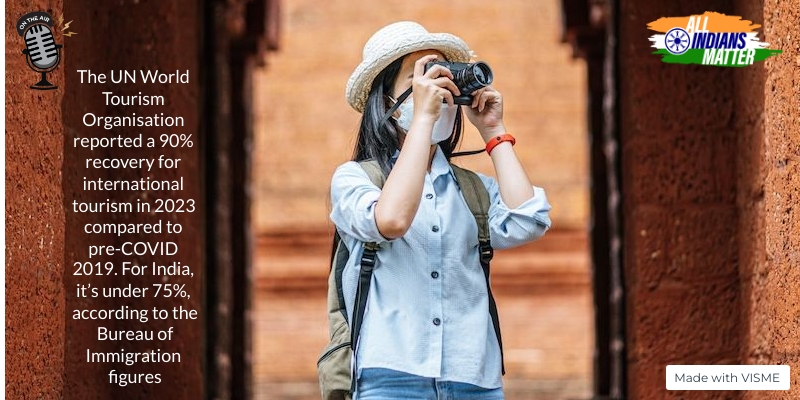Ashraf Engineer
April 29, 2023
EPISODE TRANSCRIPT
Hello and welcome to All Indians Matter. I am Ashraf Engineer.
The recently-released India Justice Report 2022 raises serious concerns about our criminal justice system. It underscores issues that we’re familiar with, such as litigation delays and the thousands of undertrials languishing in jails while awaiting disposal of their cases. But it’s also the caste and gender imbalance that is of great concern. Consider the four aspects of justice delivery that the report takes into account: the police, the judiciary, prisons and legal aid. On all of them, lower castes and women are either very under-represented or face serious discrimination. On the ground, this translates into the denial of justice to these groups.
SIGNATURE TUNE
Let’s take gender first. Women comprise only 13% of high court judges and 35% of lower court judges. The India Justice Report, or IJR, points out that women’s literacy has risen from 9% at Independence to 77% now, so there is no reason for recruitment to fall short. In the police, women’s representation is similarly low at 11.75% and among prison staff it’s just 13%. The report estimates that, at the current rate, it would take 24 years to bring women’s strength in the police force to 33%.
It’s bleak on the social justice front too. No state in the country has filled quotas for scheduled castes, scheduled tribes or other backward classes in lower or district courts. In police recruitments, Karnataka was the only state to meet these quotas.
The progress is glacial almost despite there being more educated people amongst disadvantaged communities. The pool of talent is larger and yet inclusion is elusive. So, there’s something more at work here.
With majority groups dominating the police, the force is seen to be inaccessible and unempathetic for disadvantaged groups like scheduled castes and tribes.
Incidentally, the police-to-population ratio is 152.8 per lakh; the international standard is 222.
The IJR, therefore, puts in perspective the importance of representation as a tool of social justice. It is put together through a partnership with organisations that include DAKSH, the Commonwealth Human Rights Initiative, Common Cause, Centre for Social Justice, Vidhi Centre for Legal Policy and TISS-Prayas. It was initiated in 2019 and uses data from the Bureau of Police Research and Development, the Department of Justice, Parliamentary questions, Prison Statistics of India, the National Judicial Grid, the National Legal Services Authority and also state budgets.
India’s prisons remain among the worst in the world with overcrowding at 130%. Astonishingly, more than two-thirds of prisoners are awaiting either investigation of their case or completion of trial. Meanwhile, legal aid clinics have decreased by 44% between 2019 and 2021. The national per capita spend on legal aid is a paltry Rs 4.57 per annum.
The less said about budgets for the justice system the better. No state spends more than 1% of its annual budget on the judiciary, except for Delhi and the union territory of Chandigarh. No wonder there is a 30% shortfall of judges in high courts and a quarter of the cases in 28 states are pending for more than half a decade. Did you know India has only 20,076 judges for a population of 1.4 billion In all? To put it simply, India has 19 judges per one million citizens, while the Law Commission’s target was 50 per million by 1997. So, there is a backlog of 4.8 crore cases.
Four of the five South Indian states, with the exception of Kerala, were ranked at the top in diversity in the justice system. Of the 18 states with a population of over 1 crore, Karnataka ranked first in justice delivery followed by Tamil Nadu, Telangana, Gujarat and Andhra Pradesh. Which state is at the bottom? Uttar Pradesh, where former MP and mafioso Atiq Ahmed and his brother were shot dead while being interviewed by TV crews a few days ago.
I want to return to gender.
As I said earlier, women account for only 11.75% of the police force, which is slightly up from 10% in 2020. Nine states and six Union territories have a quota of 33%, while other states have set targets ranging from 10% to 35%. However, none of them have filled those vacancies.
The numbers are even more abysmal at the officer level. The share of women is less than 8%.
As for women judges, what’s a matter of concern is that in 11 of 36 states and Union territories, the number of women judges has fallen. For instance, in Andhra Pradesh, the fall was drastic – from 19% to 6.6%, followed by Chhattisgarh where it went from 14.3% to 7.1%.
The share of women panel lawyers rose from 18% to 25% with Meghalaya having the highest share at 60.4% followed by Nagaland at 51.4%.
There was a shortfall even in the national and state human rights commissions. Since it was constituted in 1993, the National Human Rights Commission has never had a female chairperson and has had only three women members. In state human rights commissions, only one in six staff members are women.
Why is all this important? It’s important because our public institutions must reflect our social diversity and also correct imbalances where needed. Without that, they will seem distant and will not enjoy public trust. A judiciary and a police force that represents the experiences of different groups will be more effective and enjoy greater credibility.
Reservations are, of course, a critical part of the process but simply having them in place isn’t enough – as we’ve seen from the numbers the report quotes. What’s needed is institutional commitment to diversity. The people in charge must take steps to ensure that the quotas are filled. There have to be incentives for performance and, more importantly, disincentives for the lack of it.
The India Justice Report 2022 does log some progress but we’re a long way off from where we should have been. After all, justice is meaningful only when the poorest get it. And that’s not the case. The report said, as I pointed out earlier, that more than two-thirds of prisoners are undertrials and most of them are poor or disadvantaged in some way. Roughly 70% of litigants in criminal cases are below the poverty line.
There are massive vacancies in our courts too. Yet, the Union Government is slow to make appointments to the higher judiciary.
How is all this acceptable to us as a nation? Negligence is bad by itself but it makes you wonder whether there is any interest at all in delivering justice to the sections that most need it.
Thank you all for listening. Please visit allindiansmatter.in for more columns and audio podcasts. You can follow me on Twitter at @AshrafEngineer and @AllIndiansCount. Search for the All Indians Matter page on Facebook. On Instagram, the handle is @AllIndiansMatter. Email me at editor@allindiansmatter.in. Catch you again soon.






